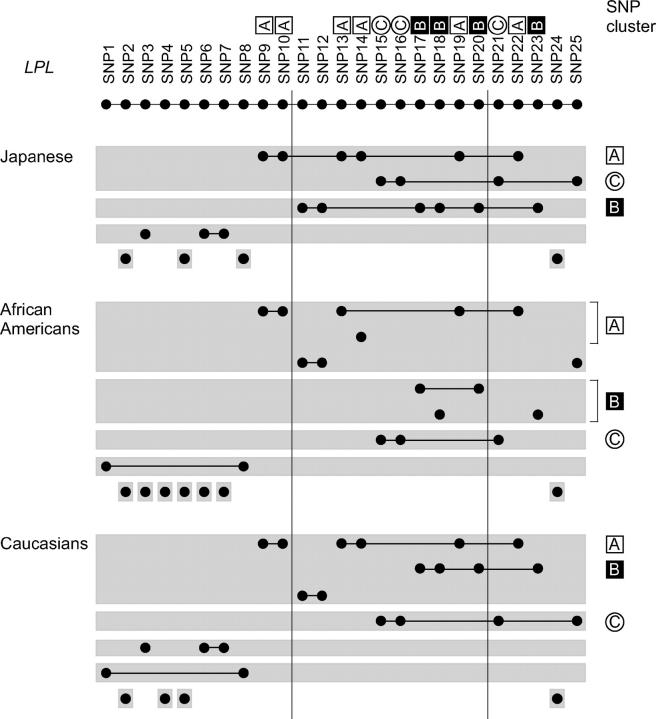Figure 3.—
LD groups and complete LD subgroups of SNPs in the LPL gene for three ethnic populations. SNPs in the same LD group are shaded together, and the SNPs in the same complete LD subgroup are joined by lines. Selection of one SNP from each of the complete LD subgroups constitutes a tag SNP set. For example, in the Japanese, there were seven LD groups. Among them, the topmost LD group consists of 10 SNPs, and it separates into two complete LD subgroups of size six (SNP9, SNP10, SNP13, SNP14, SNP19, and SNP22) and four (SNP15, SNP16, SNP21, and SNP25). As for the four LD groups at the bottom, each consists of one complete LD subgroup, including a single SNP. There are nine complete LD subgroups in total, and a selection of one SNP from each of them composes a tag SNP set of size nine. The SNP cluster name (defined in Figure 2B) to which a SNP belongs is indicated next to the SNP number. The SNP clusters were found as an “intermediate” level of SNP classifications between the two levels—LD groups and complete LD subgroups—in any of the populations. In fact, when compared to LD groups, any of the SNP clusters was included within one LD group; i.e., they were not split into multiple LD groups. On the other hand, when compared to complete LD subgroups, the SNP clusters were distinguishable in the sense that none of the complete LD subgroups were derived from more than one SNP cluster. For each SNP cluster, its name is denoted at the right, and the complete LD groups comprising the SNPs of the cluster are aligned at its left. The clusters highlight concordance in the classifications by LD groups and complete LD groups across ethnic populations. The vertical lines partition every 10 SNPs.

